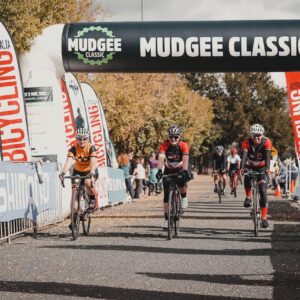Longtime BA contributor Michael Hanslip examines the different types of road bikes and explains which one might best suit your needs.
If we turn our thoughts back to the 1960s, a road bike was recognisably the same as a current one. They had drop handlebars, 700C wheels, a double diamond frame and so on. Those bikes were made with steel tubes, the brakes and tyres weren’t as good, and they were heavy. And arguably, there were only road bikes (everything was pretty similar). Bikes typically had five sprockets on the freewheel.
The 1980s brought indexed gearing, good clincher tyres replaced singles, and better steel tubing and brakes were introduced. This decade also saw the first disc wheels and the creation of funny bikes for the time trial discipline (instead of riding a regular bike)—one of the first times we saw a sub-type of road bike. Bikes had six or seven sprockets on the freewheel.
The 1990s introduced Australians to production time trial and cyclocross bikes (maybe they had CX bikes earlier in Europe?), integrated brake/shift levers, and an almost complete change from steel frames to aluminium ones (with a little titanium thrown in). The carbon that did appear in the ‘90s was expensive and heavy—nothing like the modern stuff. Bikes had eight or nine sprockets on the (now) cassette.
The new millennium saw the first successful electronic shifting, and there was lots of carbon everywhere (bars, stems, rims, frames, seat posts, etc.). Road bikes that weren’t for racing or touring became common. Bikes had 10 or 11 sprocket cassettes. That brings us close enough to today where cassettes now have 12 or 13 sprockets. Let’s take a look at the different types of road bikes, what makes them special, what their use case is, and who they are for.
The racing bike
What is it? You can’t buy a Formula One car. You can buy a World Rally Car, but the price is crazy. However, you can buy the same racing bike that Grand Tour winners ride (and it will only cost you around twenty thousand dollars). Race bikes are light, responsive, stiff and have amazing handling that permits fast climbing and full-speed descending of mountain passes. Almost the entire bike is made from carbon fibre, making it possible to make a good bike around 5kg, but most of the bikes you find in a bike shop are closer to 7kg. It’s still amazingly light. Modern tyres and disc brakes mean not slowing down much in the rain. Current racing bikes are marvels. I own one and feel special every time I jump on it.
Even a racing bike is not specific enough for today’s marketplace. Most companies have both a climbing bike and an aero bike in their catalogue. The differences are in the frame, with the aero bike sporting wing-shaped tubes and deep-rim wheels to smooth the airflow.
Who is it for? There are a lot of diminishing returns in the road bike market. A full Pro Tour level bike is around $20K, but you can have 99 per cent of that performance for about half that. And even at a quarter of the price, you get a bike better than anything available ten years ago. A Grand Tour rider always has a climbing and an aero bike at their disposal to suit the day’s stage. Consumers usually have to choose, and your pick should reflect your strengths on the bike. With the array of bicycles available today, the only people who should be buying a racing bike are those who do club racing. If you aren’t racing, another genre of bike will suit you better.
Examples: Felt offers the FR for the climbers and the AR for the speedsters. After about a decade of producing a climbing bike (the Emonda) and an aero bike (the Madone), Trek changed things up last year by introducing a new Madone that offers Emonda weight and (almost) old-Madone aerodynamics.
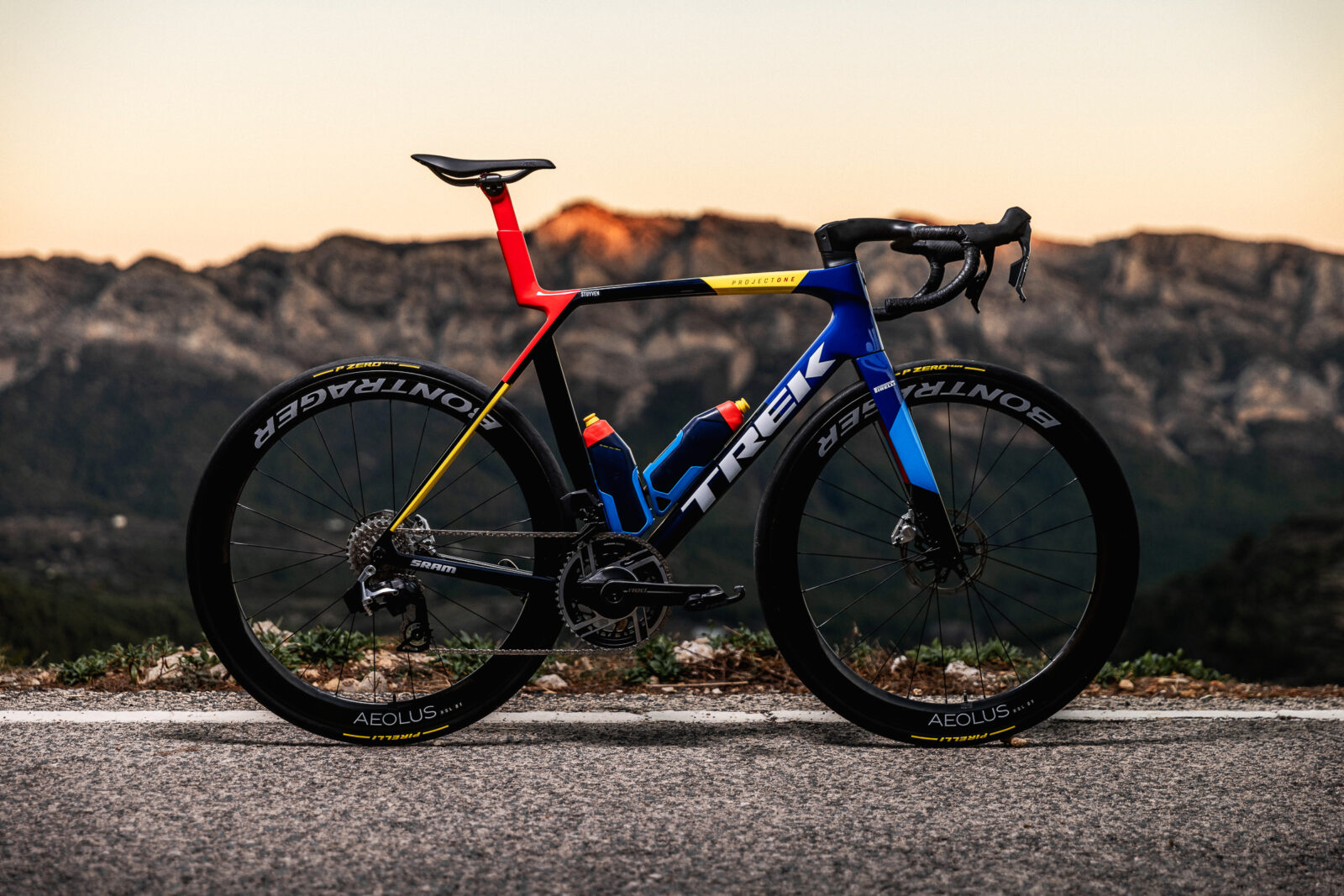
The touring bike
What is it? I recall touring bikes being a big deal when I was a teen. Seemed they were in most brand’s line ups back then. Today, they are a bit more exotic. A touring bike is a road bike with a longer wheelbase, room for bigger tyres and mounts for front and rear racks to carry all the gear while you go on a self-supported journey. I believe the advent of “bike packing”, where all the gear is carried in bags in the centre of the frame and behind the seat, is partly to blame for touring bikes being a less-available option. The rest of the blame probably goes to gravel bikes, which are almost touring bikes with even larger tyres (see gravel bikes below).
Who is it for? Anyone who wants to trek a long way self-supported and carry their gear on the bike in panniers.
Example: The Surly Disc Trucker is a classic touring bike. Some other brands have what they call a touring bike, but it isn’t what I think of. Either they have flat bars or they are really gravel/adventure bikes labelled as touring bikes.
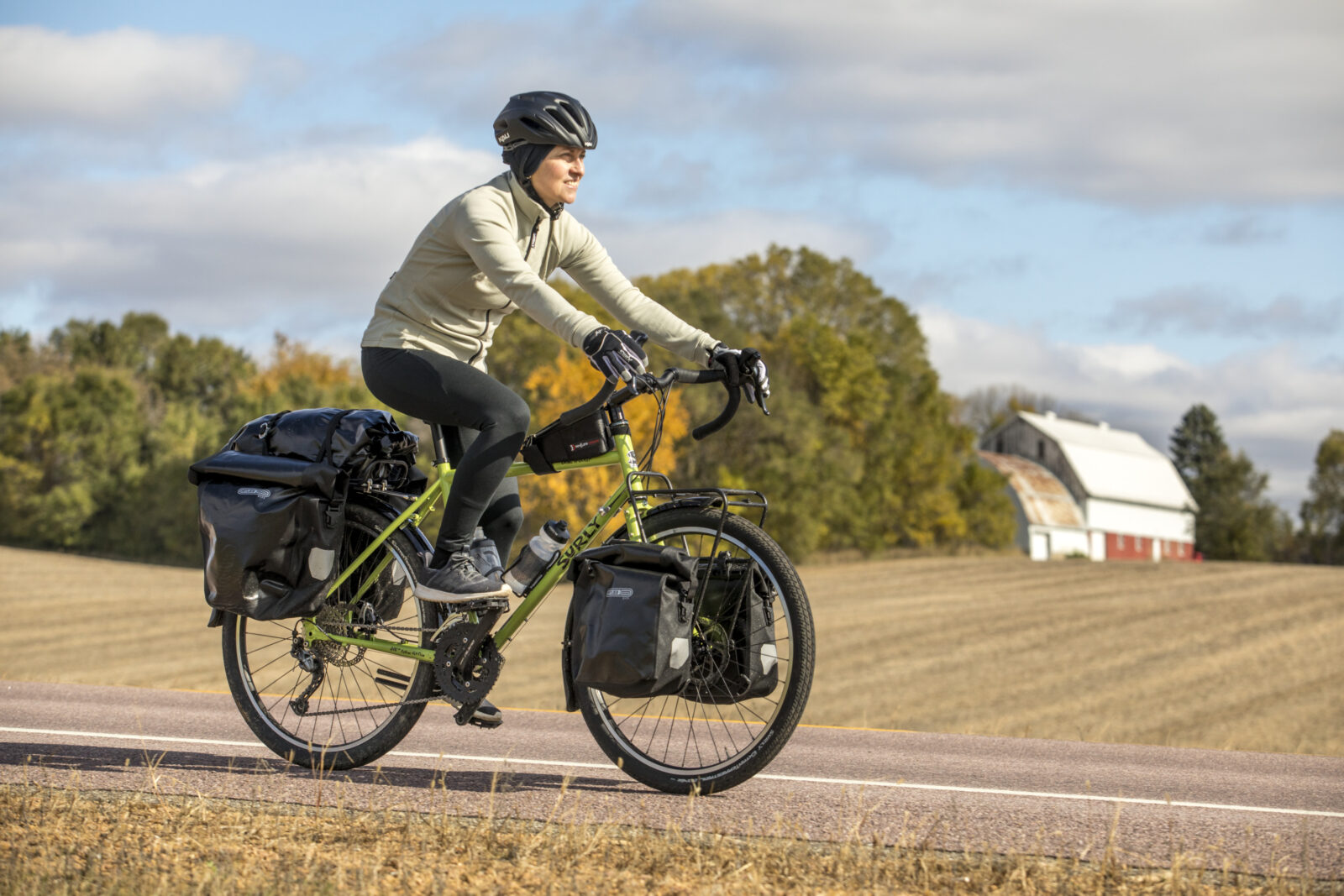
The time trial bike
What is it? The most focused of racing bikes. All else is sacrificed to aerodynamics of rider and bike in the pursuit of speed. Most big brands offer (only) one TT bike model, which is related to their larger selection of triathlon bikes, but the rules governing the two sports are quite different, so one frame will not be optimal for both.
Who is it for? Anyone who does time trials. Either stand-alone events or as part of stage races. You can do a time trial on your regular bike, but you will lose time to someone of equal ability who brought a time trial bike.
Example: The Giant Trinity offers one high-end time trial bike as well as a similar (but not identical) triathlon bike, also called Trinity.
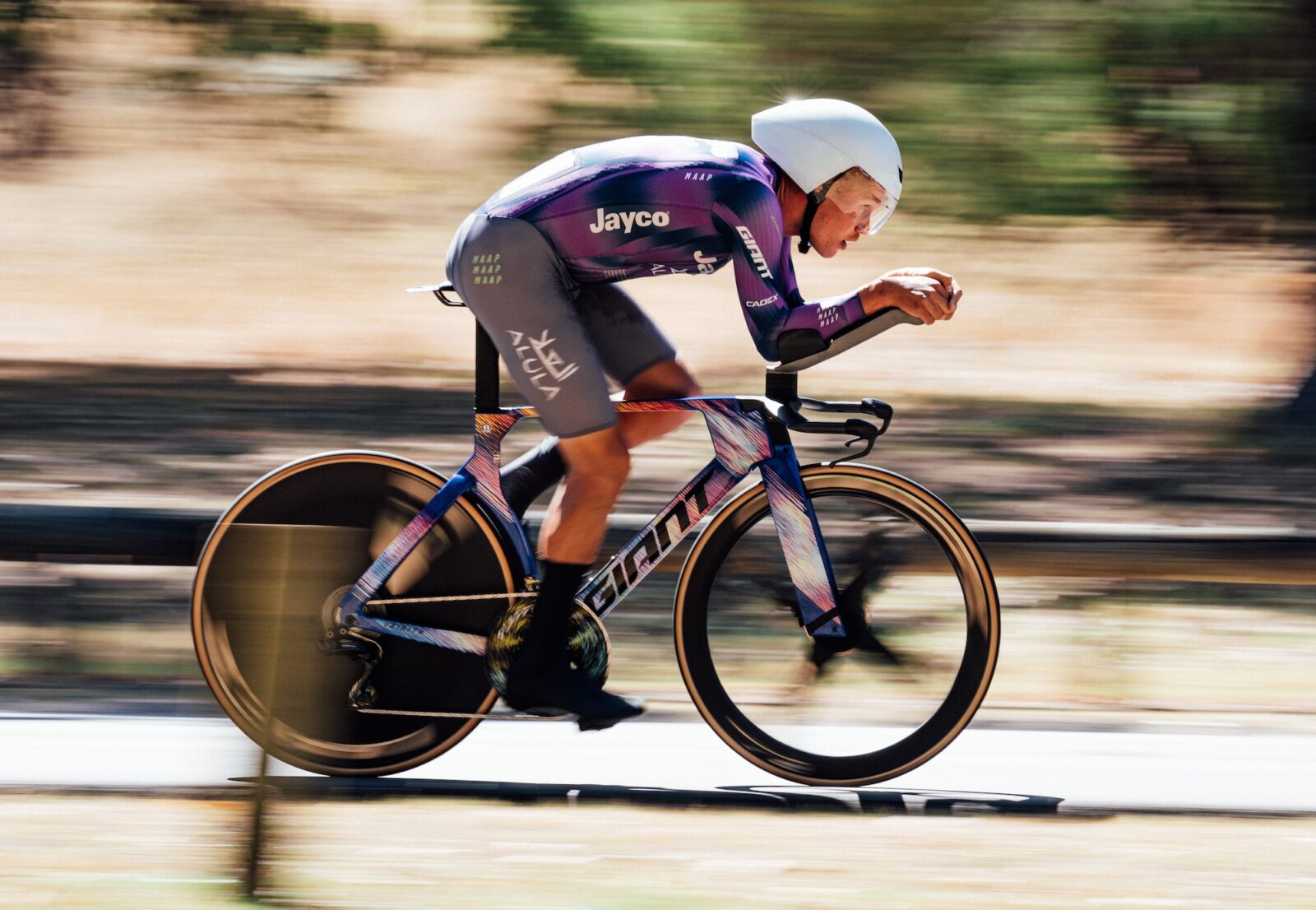
The endurance bike
What is it? An endurance bike is a racing bike with slightly soft “edges” and more comfortable geometry. A little flex in the seat stays takes the edge off bumps. A taller headtube makes the position more comfortable for long hours and/or older riders. A slightly slacker head angle and longer wheelbase mute the handling. It’s a perfect place to spend several hours at a stretch comfortably.
Who is it for? The appearance of the endurance bike roughly corresponds with the emergence of the Grand Fondo as a big thing. A few of these events have been around for decades, but many – like the ones run by Bicycling Australia – are relatively recent additions to the annual calendar. The Grand Fondo hosts hundreds or thousands of keen cyclists, many of whom are not racers; the endurance bike is a good compromise of fast and comfortable for these riders. And that is the ideal candidate for an endurance bike: someone who wants to ride long and fast, but isn’t racing and doesn’t require the last percentage of speed a good racing bike can provide.
Example: For me, the two ultimate endurance bikes are the Trek Domane and the Specialized Roubaix. Thanks to multiple generations of development, both bikes have designs that optimise comfort while retaining enough speed. The Cervelo Caledonia-5 is an endurance bike built to handle long-distance and high-speed racing.

The gravel bike
What is it? In many ways, the gravel bike is a 1980s-era MTB with drop handlebars. The evolution of gravel mimics the early development of MTB way back when, too. Like the racing bike, two clear sub-genres are emerging in the gravel space. Dedicated race bikes that aren’t meant to work as a bikepacking or all-road bike, and more adventurous gravel bikes replete with multiple mounting points for bikepacking bags, racks, mudguards and sometimes five or six bidon cages. Suspension is even creeping into some of the race bikes, but I don’t think that’s the future for gravel because MTB exists. Most gravel bikes use a standard 700C rim size, but rim widths are more like those found on MTB and tyre sizes are most often around 45mm wide (not quite MTB, definitely not road). Also, like early MTB, there is no actual agreement across brands as to the optimal geometry, and even subsequent generations from one brand move around a lot in the geometry.
Who is it for? A gravel bike with road tyres is an endurance bike. A gravel bike with full knobby tyres is a rigid MTB with drop bars. These are the Swiss Army Knife of bikes. They are for anyone who wants a bike that can do lots of things. Light touring – check. Bikepacking – check. Wednesday night criterium in C grade – check. Gravel Fondo has over 150km of dirt roads – check. Gravel race – check. Commuting – check.
Gravel is huge right now because so many cyclists are trying to get off the main roads, away from cars. And even on those roads, potholes make standard road tyres a bit precarious. In Australia, gravel bikes tend to be second or third bikes for many – but in my recent bunch riding skills classes, I had several gravel bike-owning novices for whom it was their only bicycle.
Example: Orbea’s Terra gravel bike is available in several options, including alloy and carbon frames. At the adventure end of the gravel spectrum, it has numerous mounts on the frame and fork.
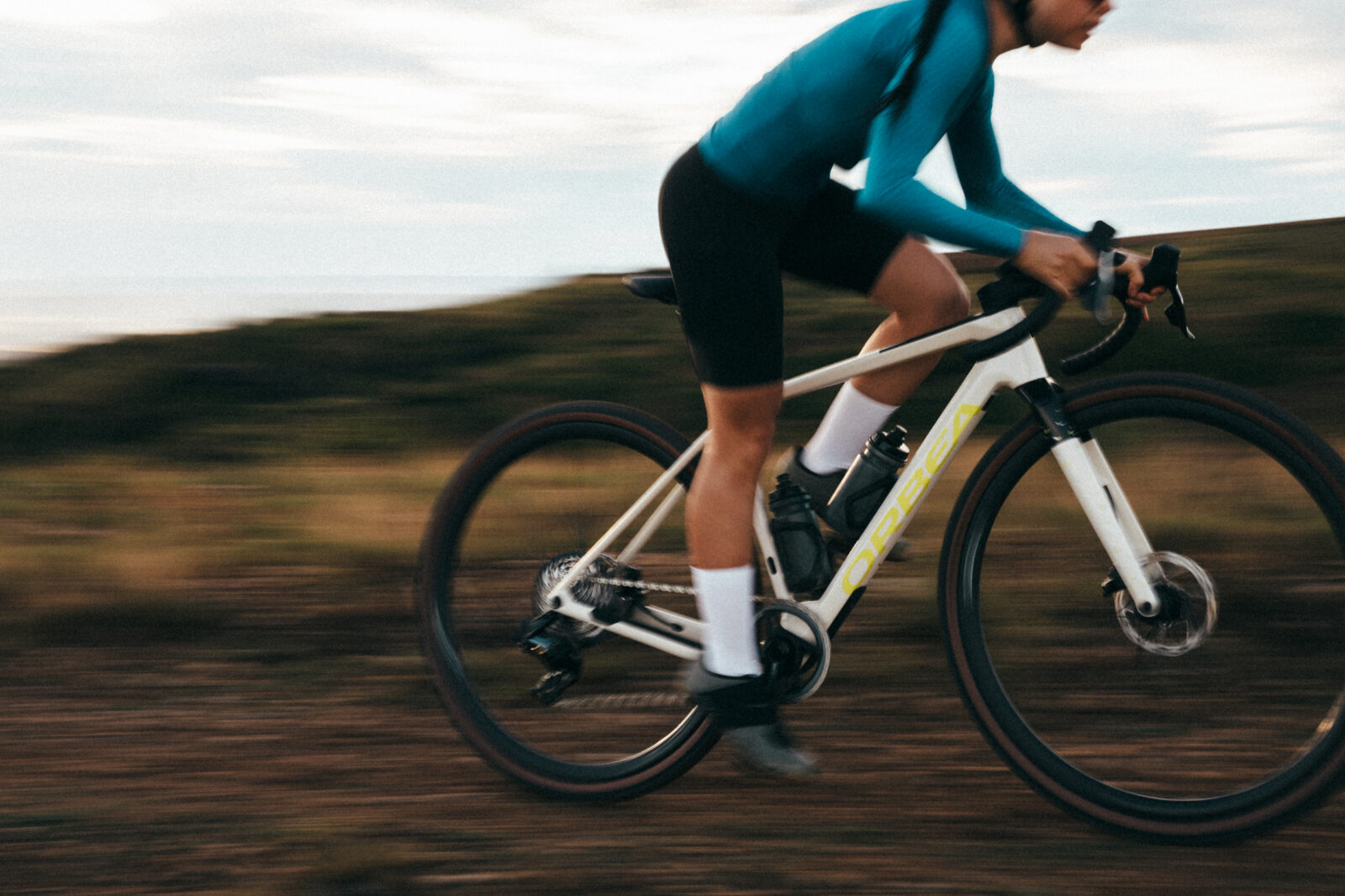
Summing up
At its most basic, a road bike is any bike with drop handlebars. But it is never so simple as that. Time trial bikes do not have drop bars but are the most road-specific bike of the lot. I once worked in a bike shop where we purchased older road bikes and sold them as commuter bikes after swapping out the drop bars for flat bars – yet they were still very much road bikes. And what about a gravel bike with 2” MTB tyres on it compared to a hardtail MTB with the same 2” tyres? If I could have only one road bike, I think it would have to be the Formula One option – a pure race bike. I like racing and love the unmitigated speed of a modern racing bike. But that’s just me. And in writing that sentence, I realised that would cut me off from riding on any gravel. Your choice should reflect your riding habits and intentions. Hopefully, this little guide will help you sort out which type of bike best suits your needs.

Michael Hanslip
Michael Hanslip - Michael has been racing all kinds of bikes, coaching, bike fitting, cycling commuting, and contributing to BA from Canberra for over 30 years.


